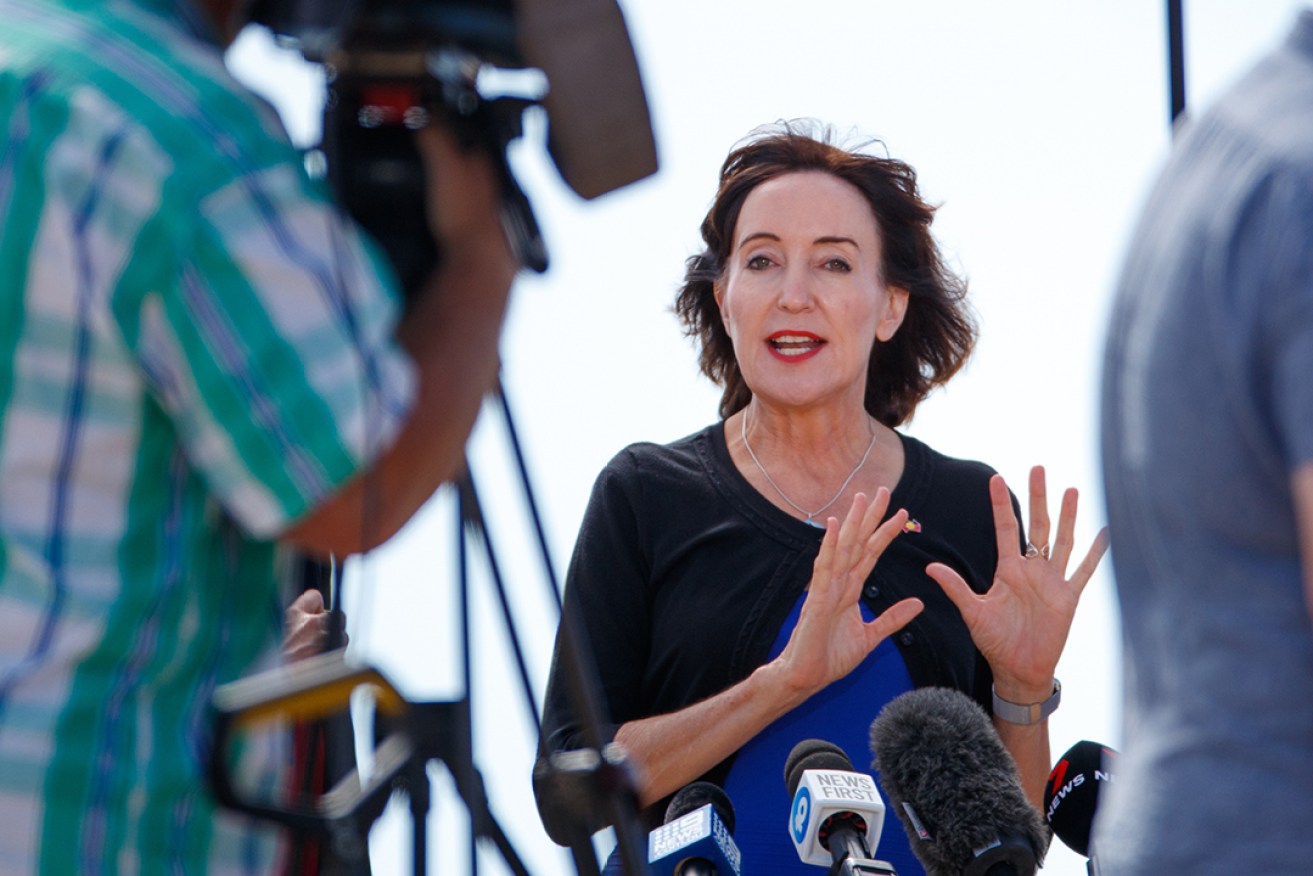‘Politics dressed up as science’: SA report lashes Murray-Darling plan
South Australia says that “a dead river system is no use to anyone” and the Murray-Darling Basin Plan has a “complete lack of commitment” to recovering adequate environmental water, in a report released today.


Deputy Premier Susan Close today released the State Government's response to the Murray-Darling Basin Royal Commission 2019. Photo: Matt Turner/AAP
The state’s long-awaited response to the Murray-Darling Basin Royal Commission 2019 says “for decades state governments have recklessly over allocated” water, the consequences most dramatically demonstrated when the Murray Mouth closed for the first time in 1982.
Acting Premier Susan Close said the report addresses 44 commission recommendations, with a headline call for the plan’s 450 gigalitres of water to be delivered in full before the basin is irreparably damaged.
The submission also calls for more action on basin environmental outcomes, for the plan to address Aboriginal water rights and to ensure the use of water is more transparent and accountable.
Commissioner for the River Murray in South Australia Richard Beasley SC and the Environment and Water Department produced the report, an election promise response to the Murray-Darling Basin Royal Commission findings.
Beasley said in the report that the current basin plan failed legally, scientifically and ethically and that it was supposed to use the best available scientific knowledge in its preparation.
“It was not. The water recovery target for the environment was determined following a political compromise not authorised by the Water Act,” Beasley said.
“Politics was then dressed up as science, a falsehood that continues to this day. Climate change projections were not included in the water recovery target, against the firm advice of the CSIRO.”
Close said today that the State Government would not accept “anything less than a basin plan that delivers on all of its original commitments, including environmental outcomes equivalent to the recovery of 3200 gigalitres of water”.
“During the Millennium Drought, ecosystems that had already suffered decades of stress from increasing salinity and decreasing flows from uncontrolled upstream development risked collapse and irreversible damage,” Close said.
“When the next extended drought comes – and the experts are telling us that it will – we need to have available an appropriate amount of water so that the basin’s environments can be protected.”
The response was released after Federal Water Minister Tanya Plibersek introduced new legislation on September 6 to restart voluntary water buybacks to help recover 450 gigalitres of promised environmental flows to the river system.
Only 26 gigalitres have been clawed back in the past decade.
In relation to the Royal Commission report, Beasley said Bret Walker SC made 44 recommendations to improve its implementation and future iterations.
“Not one crucial recommendation has been adopted by any government to date,” he said.
However, Beasley said the current basin plan is better than “no plan at all” but it must “be improved and made lawful”.
The 3,200 gigalitres basin plan currently comprises:
- recovering 2,075 gigalitres of water for the environment by the Australian Government through water entitlement purchases and investment in infrastructure to make water use more efficient.
- 70 gigalitres reduction in water recovery in the northern basin, arising from the Northern Basin Review, through a more targeted approach to water recovery that minimises social and economic impacts in northern basin communities.
- Saving 605 gigalitres by New South Wales, Victoria and South Australia implementing water-saving infrastructure projects or changes to river operating rules.
- Recovering 450 gigalitres of water for the environment in the southern basin by the Australian Government through projects that reduce water losses from irrigation, commercial and public water supply infrastructure with neutral or positive socio- economic impacts (efficiency measures).




